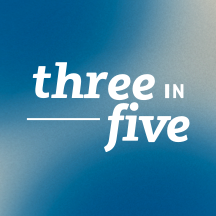Explore institutional insights

Client sign in
- Please enter a search term.
-
Insights
Stay up to date

Market update

Investor insights
-
Investments
Stay up to date

Market update

Investor insights
-
About us
Stay up to date
Learn more about our investment group

Market update

Investor insights
- Please enter a search term.
- Investments
-
Insights
- Back
- Insights
- Insights Overview
-
All insights
- Back
- All insights Overview
- Q3 2021: Investment grade private credit update
- Evaluating private credit opportunities in today’s market
- 2022 BentallGreenOak Perspective report
- The case for real estate
- The Impact of Rising Rates – LDI Client Update
- Global Investment Outlook 2022
- Investing in an inflationary environment
- Q2 2022: Investment grade private credit update
- Regulatory Update - Schedule D Part 1 (Bonds)
- Q3 2022 Investment Grade Private Credit Market Update
- Crescent Capital Markets Q3 2022 Update
- Multi-Asset Credit Strategy: October 2022 Update
- Investing into the rate-hiking cycle
- Multi-Asset Credit Strategy: November 2022 Update
- Multi-Asset Credit Strategy: December 2022 Update
- 2023 Global Investment Outlook
- Q4 2022: Investment Grade Private Credit update
- Multi-Asset Credit Strategy: January 2023 Update
- Fireside chat: Seize new opportunities in bonds and structured credit
- Q1 2023: Investment Grade Private Credit update
- Q1 2023: Crescent Capital group market commentary
- Crescent experts Q&A: How innovation will drive private debt forward
- June 2023: Private Credit Insights
- The BMA’s upcoming regulatory review
- The Elusive Recession - Commentary by Crescent Capital Markets
- 2023 Mid-year Global Investment Outlook
- Commercial mortgage-backed securities are in the spotlight again, but this isn't 2008
- Q2 2023: Investment Grade Private Credit update
- Cautious optimism
- Q3 2023: Investment Grade Private Credit update
- Narrowly syndicated credit: yield opportunities in an underexplored niche
- Don't rest yet, the recession will rear its head in 2024. Here's how to protect your bond portfolios
- 2024 Global Investment Outlook
- Q4 2023: Investment Grade Private Credit update
- Looking under the hood at below-IG fixed income
- Q1 2024: Investment Grade Private Credit update
- Global insurance group
- Retirement plan solutions
- Sustainable Investing
- Market updates
-
Three in Five Podcast
- Back
- Three in Five Podcast Overview
- Mark Attanasio on the changing landscape of private credit
- James Slotnick on the U.S. midterm elections
- James Slotnick on the 2022 U.S. midterm elections
- Andrew and John on commonalities in investment grade private credit and narrowly syndicated bank loans
- Laila on operational considerations for investment grade private credit investors
- Cliff Corso on opportunity in the high net worth market
- Kate McKeon on sustainable investing and Net Zero
- Ben Greene on education, allyship, and the trans experience
- Melissa on the importance of the client experience
- Cristina Medina on Invest in Girls
- Steve on the Canadian P&C insurance market
- Rich and Peter on growing stress in the banking sector
- Doug on the debt ceiling
- Jim Blakemore on real estate debt
- Chris and Tim on the Special Financial Assistance Program for Taft Hartley plans
- Veronique on the evolution of LDI investing in Canada
- Chris Wright on the future of private credit
- Beth Brown on workplace burnout
- D.J. on the CMBS market
- Josh Davis on inner mastery and effective leadership
- James Slotnick on the politics of raising the U.S. debt ceiling
- Kevin Quinlan on climate change as a material investment risk
- Steve Peacher on the 10-year anniversary of SLC Management
- David Hamlin on fundamental credit research
- Michael Schnitman on alternatives in the high net worth space
- Steve Peacher reflects on challenges and milestones in 2023
- Subscribe
- About us
- Careers
- Contact us
- Newsroom
- Thank you
- U.S. | EN

Welcome!
Please select your country and language below:
Episode 85
MARCH 15, 2023
Steve on the Canadian P&C insurance market
Steve Guignard, Senior Director of Client Solutions, discusses how P&C insurers in Canada are dealing with regulatory changes, market volatility, and new investment opportunities.
Steve Peacher: Hi, everyone it's Steve Peacher from SLC Management. Another episode of “Three in Five.” Today I’m joined by Steve Guignard who’s a senior director in our client solutions group, works different clients around about around asset allocation and how they interact with markets and now they can invest in the most efficient ways to achieve their goals. Today's topic is around P&C insurers, specifically Canadian, P&C insurers. So, Steve as we were talking about before we recorded this some of your comments may apply to P&C insurers across North America. But some may be specific to those who are resident in Canada, because there are some different accounting considerations and other considerations. But thanks for taking a few minutes today.
Steve Guignard: Happy to be here. Thanks for having me.
Steve Peacher: So, let me just start with a very broad question. You know, what are some of the big challenges that Canadian P&C insurers are facing in 2023?
Steve Guignard: So one challenge that is brought up in practically all meetings that we have with P&C insurers is the transition to IFR 17. So for listeners that don't know, IFR 17 is a new accounting standard for insurance contracts that became effective at the beginning of this year. Now I don't want to be the one responsible for bringing the podcast statistics down by talking too much about an accounting change, but it really matters from an investment perspective and here's why. So, under the previous framework, IFR four the selection of assets directly impacted the valuation of liabilities. And so there was a clear link between the asset portfolio 0f an insurer and the value of its liabilities. This link is now effectively broken under IFR 17, because of the way that the liabilities are discounted. And so the challenge here is that it can result in increased volatility of an insurers balance sheet or income statement as changes in interest, rate and credit spread will impact the value of the invested assets, but not necessarily the liabilities in the same way as it used to before. So that's definitely one challenge. Another challenge that they're facing always under the theme of higher volatility, is the uncertain market environment in which they are currently operating. I don't think I need to remind anyone that 2022 was a challenging year for investors, and I don't have a crystal ball but looking forward the next few years just might be as volatile and uncertain. And this level of volatility and uncertainty makes it more difficult for P&C insurers to manage the exposure that they have to various risk.
Steve Peacher: So, how do you see P&C insurance? And I should mention for everybody listening here P&C stands for property and casualties. So how do you see P&C insurance and Canada dealing with some of the challenges that you just outlined?
Steve Guignard: So, from an investment perspective, P&C insurers are, for one, reviewing their asset and liability management practices. This is obviously something that was always important for insurers and IFR 17 essentially changed the rules of the game. So most of the work that is done in this area focuses around understanding how sensitive are the liabilities to things such as changes in interest rate and credit spreads under the new framework and then making sure that the investments that are backing these liabilities are aligned with these new sensitivities as much as they can be. And then the second thing that they're doing, and it's somewhat goes hand in hand with the first item that I just mentioned. But they are also reviewing their strategic asset allocation given the new market environment that they are facing. So we have clients that have reviewed their assets assumptions less than one year ago but are already in the process of refreshing their analysis because they realize that they operate in a completely different investment environment, and the assumptions that they use even a year ago, need material revisions. And so, in short, you know, are they dealing with these challenges? Well, you know they're reviewing their investment strategy and risk management practices to make sure that it remains appropriate.
Steve Peacher: So what does that mean, what's resulting from that as it relates to the investment portfolio, their asset allocation as a result of that?
Steve Guignard: Yes, the first clear trend that we have observed is the diversification of the fixed income component of their portfolio. Now that fixed income is fashionable again investors are taking a closer look at their exposure, and a lot of them realize that proper diversification is actually hard to achieve in the Canadian fixed income market. And to give you one data point in the short end of the curve where P&C insurers typically invest given their lower duration need, the financial sector makes up more than 60% of the public corporate bond market in Canada, and so appropriate sector diversification is an issue and what P&C insurers have done is that they've broaden their fixed income investment universe to include asset classes such as U.S. securitized fixed income, which can be quite capital efficient for an insurers, especially securitized asset with an investment grade rating. They now also include private fixed income as a means to capture the illiquidity premium, but also achieve better sector diversification. And finally, they are also taking a closer look at below investment grade securities, so asset classes such as high yield and bank loans which do carry a higher credit risk charge for insurers but provides a relatively attractive yield to compensate for it. The second trend that that we have observe, and I think this one is not unique to insurers is the increased use of alternative investment, especially real assets such as real estate and infrastructure. And with these assets they're looking for inflation protection. A lot of these asset classes, you know, have a cash flow profile that has the potential to increase with inflation. They're also looking for diversified sources of income outside of traditional fixed income. And finally, importantly, they're looking for diversification to build more resilient portfolios, you know in 2022 investors realized that you know equity and bonds correlation can turn quite positive in certain type of market environment, especially when inflation is running high. And so they're looking at alternatives to smooth out the return pattern and manage your overall portfolio volatility.
Steve Peacher: So the combination of accounting changes and the need to change asset allocation in the middle of a rising rate environment with yield curves at a big shift really throws things up in the air which I know makes things interesting for you, haha. As you deal with our clients. Let me. I, as you know I like to ask a personal question at the end. I know you're into woodworking. I've actually had some friends who during Covid that was their kind of the new hobby they took up, I think with you it well predates Covid. So, two questions related to that. How did you get into it? And then, when you think of all the different things that you've made, what are the, kind of what's the most interesting? What are you most proud of? What's the best thing you've done?
Steve Guignard: Yeah. So I got into wood working a little bit more than 5 years ago. So yes, it predates the pandemic and it's really something that I enjoy doing. I started it because I wanted to put, you know, the right side of my brain, the more creative side to work a little bit, but also because I wanted to build something with my hands and try something a little bit different. Now in terms of, you know, the project that I’m the most proud of. I must admit not all of my project passed the test of time. But you know this is part of the fun learning to work with different wood species, and the project that I’m the most proud of is actually one that failed. So, I did an outside table for my sister. But you know, unfortunately I used the wrong wood species, the wrong finish, and you know, after a couple of months it looks like a very old table. But I learned a lot and we have a good laugh every time we talk about it as a family.
Steve Peacher: Well maybe you’ve discovered the technique of antiquing a table, a brand new tables. And it also sounds like you may need to expand the size of your garage, because the you that's where all your all your equipment is. So, well, listen thank you, Steve, for taking the time. I think there's a lot of interesting things going on within that P&C space in Canada. And you just you kind of touch the surface of that. So thanks very much for that. Thanks for everybody, to everybody, for listening to this episode of “Three in Five.”
Steve Guignard: Thank you, Steve.
This content is intended for institutional investors. The information in this podcast is not intended to provide specific financial, tax, investment, insurance, legal or accounting advice and should not be relied upon and does not constitute a specific offer to buy and/or sell securities, insurance, or investment services. Investors should consult with their professional advisors before acting upon any information contained in this podcast. Any statements that reflect expectations or forecasts of future events are speculative in nature and may be subject to risks, uncertainties and assumptions and actual results which could differ significantly from the statements. As such, do not place undue reliance upon such forward-looking statements. All opinions and commentary are subject to change without notice and are provided in good faith without legal responsibility.
SLC-20230313-2786227



